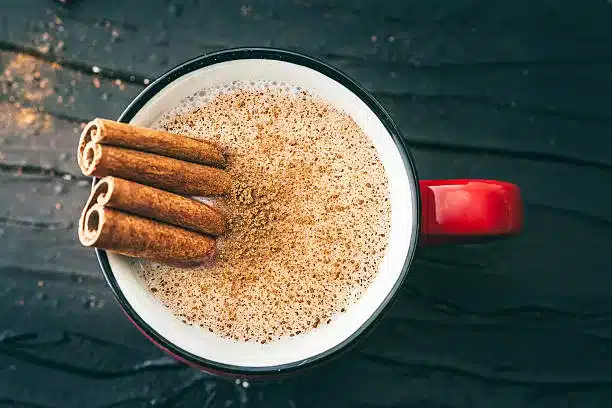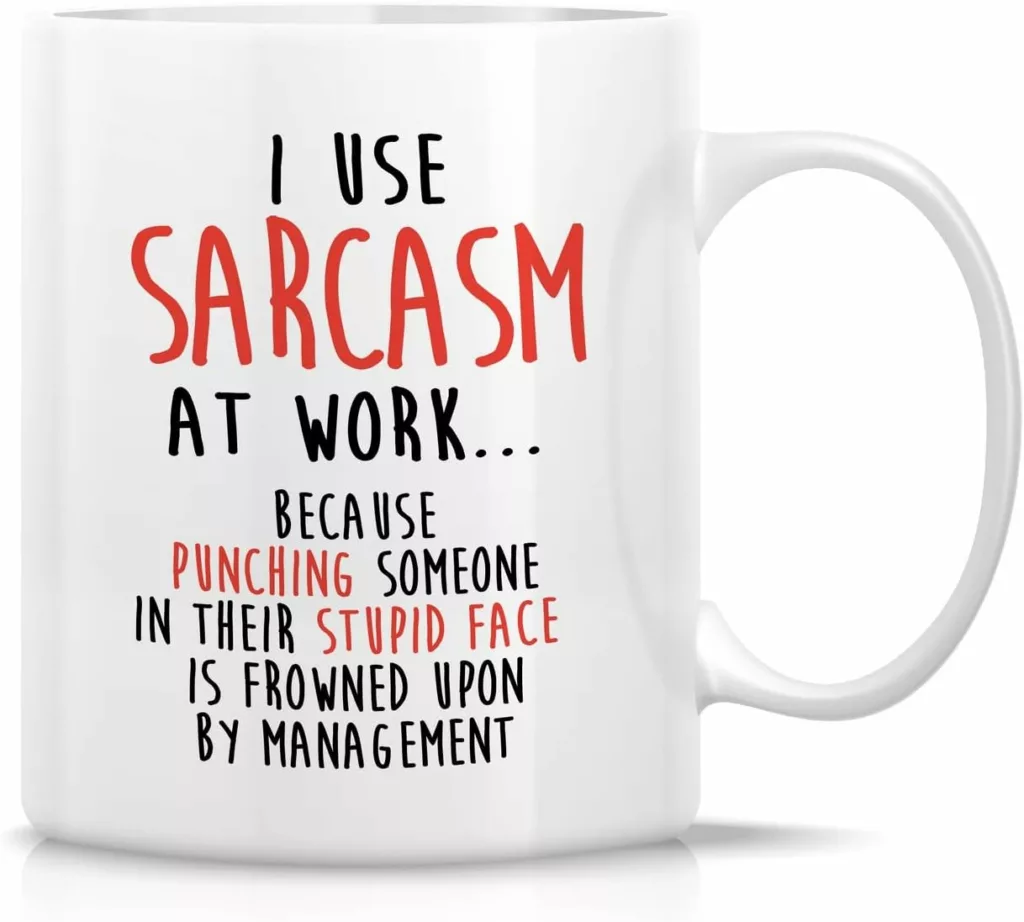Introduction To Coffee Coffee Coffee
Ah, coffee coffee coffee. That aromatic, soul-warming beverage that has nestled itself into the very fabric of our daily rituals. Whether it’s the first thing that greets us in the morning or the companion for those late-night brainstorming sessions, coffee has been both, a confidante and a catalyst.
A Brief Look into Our Love Affair with Coffee
From the bustling streets of Italy, where the rich scent of espresso forms an invisible canopy, to the minimalist coffee shops of Scandinavia, our world is truly enamored by this dark elixir. It’s not just a drink; it’s an experience, a tradition, a moment of solace, and for many, a sheer necessity. Historians will tell tales of its ancient origins, entrepreneurs of the fortunes built on its back, and artists of the inspiration drawn from its depths. And let’s not forget those Instagram aficionados, ensuring that coffee’s photogenic side is showcased to the world.
The Burning Question: How Much Coffee Is Just Right, and How Much Is Overdoing It?
But, amidst our poetic odes and caffeinated rambles, there emerges a pressing query, whispering from the corners of our mugs – just how much of this bewitching brew is too much? As we stand at the precipice of health and hedonism, it’s time to delve into this question. After all, as any true coffee lover would attest, the line between savoring and overindulging can sometimes be as thin as the foam atop a well-crafted cappuccino.
Stay with us as we journey through the lands of coffee beans, scientific journals, and perhaps, our own coffee-fueled reflections. Because, dear reader, like the perfect brew, it’s all about balance.
related Article – Shocking Health Benefits Of Cinnamon Coffee
Introduction To The Health Benefits Of Cinnamon Coffee Quick Overview of the Fusion of Coffee and Cinnamon Coffee and cinnamon, individually, have been enjoyed for millennia, each boasting a rich history and a plethora of uses. But, when combined, they create a harmonious blend that not only delights the palate but also offers a variety … Read More >>

A Glimpse Into the World of Coffee
A Short History of Coffee Consumption
Ah, to trace the journey of coffee is to walk through time itself. The tale of this beloved beverage is rich, aromatic, and, at times, quite surprising. Let’s take a step back and immerse ourselves in the chronicles of coffee, from its humble origins to its global acclaim.
The Legendary Ethiopian Origin Tale: Goats and Their Hyperactive Dancing
Legend has it, in the verdant highlands of ancient Ethiopia, there lived a humble goatherd named Kaldi. One day, he observed his goats consuming some peculiar red cherries. Post indulgence, instead of their usual docile demeanor, the goats danced with an uncharacteristic vigor, practically prancing around in caffeinated delight.
Curious and a tad adventurous, Kaldi decided to taste these mysterious cherries himself. Feeling the newfound energy, he couldn’t keep this discovery to himself. He rushed to a local monastery, sharing the cherries with a monk. However, the monk, skeptical of the cherries’ effects, threw them into a fire. As the cherries roasted, a captivating aroma filled the air. Soon, roasted beans were extracted, ground, and mixed with water. Thus, the first cup of coffee was born — all thanks to some frolicsome goats and a dash of serendipity.
Coffee’s Migration: From Arab Lands to European Coffee Houses to Global Dominance
After its whimsical discovery, coffee began its global odyssey. The beans found their way to the Arabian Peninsula, where they were first cultivated systematically. By the 15th century, coffee was being grown in the Yemeni district of Arabia and consumed in Persia, Egypt, Syria, and Turkey. It wasn’t just a drink but a cultural phenomenon, with elaborate coffee rituals and public coffeehouses known as “qahveh khaneh.”
By the 17th century, the allure of coffee had permeated Europe. The continent saw the emergence of coffee houses, dubbed “penny universities” in England, due to the stimulating discussions one could partake in for just a penny. These establishments became hubs of intellectual exchange and played pivotal roles in the Age of Enlightenment.
Coffee’s journey didn’t stop there. As European colonization spread, so did coffee, with plantations emerging in exotic locations like Java and the Caribbean. Fast forward to today, and coffee stands as one of the most traded commodities globally, with millions surrendering to its aromatic embrace every morning.
Indeed, from playful goats in Ethiopia to bustling cafes in cities worldwide, coffee’s journey is as rich and flavorful as the drink itself. One can’t help but wonder: if Kaldi’s goats hadn’t tasted those cherries, where would we be in our morning routines?

Coffee in Popular Culture
If art imitates life, then the omnipresence of coffee in popular culture is a testament to its deep-rooted significance in our lives. From iconic film scenes to the lyrics of chart-topping hits, coffee has been both a symbol and a storyteller. Let’s brew ourselves a fresh perspective and explore the fascinating relationship between coffee and popular culture.
The Image of the Tireless Worker Clutching a Coffee Mug
Think of any movie or TV show scene set in an office, and there’s a good chance someone’s holding a coffee cup. The bustling journalist racing against time in a newsroom, the detective pulling an all-nighter to crack a case, or the coder churning out lines of programming — they all have one thing in common: the quintessential coffee mug. It’s more than just a prop; it’s a symbol of dedication, endurance, and sometimes, sheer desperation. This image reinforces the idea that coffee is the fuel driving our modern work ethos, a silent partner in our pursuits and passions.
related article – best travel coffee mugs for on the go caffeine lovers
This article will discuss the best travel coffee mugs for on-the-go caffeine lovers who want to enjoy their favourite hot beverages while on the move. It will provide an overview of the different types of travel coffee mugs available, key features to look for when choosing a travel coffee mug, and a list of the … Read More >>

Coffee Shops as Modern-Day Communal Hubs
Enter a coffee shop, and you’re instantly met with a microcosm of society. Writers lost in their laptops, friends catching up after ages, business meetings, and, of course, the solitary coffee drinker soaking in the ambiance. Thanks to shows like “Friends” with its iconic Central Perk, coffee shops have been immortalized as modern-day agora — spaces of community, conversation, and connection.
In today’s digital age, with its isolating tendencies, these cafes serve as a bridge to genuine human interactions. Whether it’s the heart-to-heart talks over lattes or the gentle nods between regulars, coffee shops brew not just coffee but also community.
related article – the best coffee shops in the world
So, I hear you asking where are the best coffee shops in the world, and why have you chosen them? Hey there! If you’re a coffee lover like me, then you know that coffee shops are more than just places to grab a caffeine fix. They are a hub for the coffee culture around the … Read More >>

Quirky Trivia: Movies and TV Shows with the Most Coffee Scenes
For a bit of fun, let’s spill the beans on some caffeine-infused trivia. Films and TV shows have often celebrated our love affair with coffee. Remember the incessant coffee dates in “You’ve Got Mail” or the sheer amount of java consumed in “Twin Peaks”? And who could forget the witty coffee banter in “Gilmore Girls”? Lorelai and Rory probably hold the fictional record for the most coffee consumed in a series.
While it’s tough to pinpoint which movie or show has the absolute most coffee scenes, these examples highlight just how integral coffee is to storytelling. It’s a mood setter, a character developer, and sometimes, even a plot driver.
In conclusion, coffee’s role in popular culture goes beyond mere representation. It’s an emblem of our times, our struggles, and our moments of respite. Whether it’s the weary worker’s elixir or the artist’s muse, coffee, in its many portrayals, remains a constant — binding us in its warm, aromatic embrace.
The Science Behind Coffee
What Makes Coffee, Coffee?
Coffee, at its core, is more than just a warm beverage that awakens our senses. It’s a complex concoction of chemistry and flavor, with each sip telling a tale of its ingredients. But what really makes coffee what it is? Let’s dive deep into its primary components: caffeine and antioxidants.
Caffeine: The Main Stimulant
Ah, caffeine – the heart and soul of coffee, and the primary reason many of us reach for that cup every morning. But what is caffeine, and how does it manage to kick us out of our slumber with such efficiency?
Brief Insight into How Caffeine Affects the Brain
Caffeine is a natural stimulant that primarily affects the central nervous system. Its primary mode of action? Blocking the action of a neurotransmitter called adenosine. Under normal circumstances, adenosine levels rise during the day, making us increasingly drowsy and setting the stage for a good night’s sleep.
Enter caffeine. By competing with adenosine and binding to its receptors, caffeine essentially throws a wrench in this drowsiness machinery. The result? Increased alertness, better concentration, and that signature energy boost. It’s like giving the brain a gentle nudge and saying, “Not yet. There’s more to do.”
Antioxidants: Not Just a Jolt of Energy

When we think of coffee, its rejuvenating properties often come to mind first. However, coffee is also a treasure trove of antioxidants, those tiny molecular warriors that combat oxidative stress in our bodies.
The Role Antioxidants Play in Health
Oxidative stress occurs when there’s an imbalance between free radicals (unstable molecules) and antioxidants in the body. This imbalance can damage cells and contribute to aging and diseases like cancer, cardiovascular diseases, and neurodegenerative disorders.
The antioxidants in coffee, such as chlorogenic acid and melanoidins, help neutralize these free radicals. Regular consumption of coffee can, therefore, provide a protective effect against certain diseases and even improve liver health. It’s fascinating to think that the same cup of coffee that gets you through a Monday morning meeting might also be playing a part in keeping your cells in tip-top shape.
In essence, coffee is a beautiful blend of stimulation and protection. While caffeine jumpstarts our brain into action, antioxidants silently work in the background, ensuring our body remains resilient. Truly, every sip of coffee is a testament to nature’s genius.
Potential Benefits of Regular Coffee Consumption
Coffee, with its alluring aroma and rich taste, is more than just a beverage; it’s a ritual, a conversation starter, and for many, an absolute necessity. Beyond its delightful sensory experience, coffee also packs an impressive array of health benefits. Let’s explore the positive impacts of this beloved drink on our well-being.
Improved Mental Alertness
No surprises here. For many, coffee is the go-to elixir to shake off morning grogginess or power through an afternoon slump.
- How it works: As discussed earlier, caffeine, the primary stimulant in coffee, blocks the action of the neurotransmitter adenosine. This interference leads to increased firing of neurons in the brain. The result? Enhanced alertness, improved concentration, and sharpened cognitive functions. So, that increased focus during the post-coffee brainstorming session? You’ve got caffeine to thank for that.
Reduced Risk of Certain Diseases
Regular coffee consumption has been linked to a lower risk of several chronic diseases. Science has given us more reasons to cherish our coffee ritual.
- Parkinson’s Disease: Studies suggest that coffee drinkers have a significantly reduced risk of developing Parkinson’s, a neurodegenerative disorder. The caffeine in coffee seems to have protective effects on the nervous system.
- Type 2 Diabetes: Regular coffee consumption is associated with a reduced risk of Type 2 Diabetes. Compounds in coffee, including antioxidants, are believed to improve insulin sensitivity, playing a pivotal role in this protective effect.
While these are just a couple of examples, it’s worth noting that coffee has also been linked to a lower risk of diseases like Alzheimer’s, certain types of cancer, and even stroke. However, as with all scientific research, it’s essential to remember that correlation does not necessarily mean causation. Enjoying coffee as part of a balanced diet and a healthy lifestyle is key.
The “Feel-Good” Factor: Dopamine and Its Role

Ever wondered why that morning coffee makes you feel so good? Beyond the physical jolt of energy, there’s a feel-good factor at play.
- Dopamine Dynamics: Caffeine increases the release of dopamine in the brain, a neurotransmitter often dubbed the “feel-good” chemical. Dopamine plays a crucial role in mood, pleasure, and reward. By stimulating its release, coffee not only wakes up the body but also uplifts the mood, making us feel more positive and motivated.
In conclusion, coffee, when consumed in moderation, offers a slew of benefits that extend beyond the immediate sensory pleasure. From cognitive boosts to potential protection against diseases, it’s a drink that delights both the palate and the body. As with everything, moderation is key, and it’s essential to enjoy coffee as part of a balanced lifestyle. So, here’s to raising our mugs to good health and good times!
Side Effects of Overconsumption
Coffee, for all its charm and benefits, is much like any other aspect of life: best enjoyed in moderation. While a cup or two might be the elixir of productivity and well-being, going overboard can have its pitfalls. Let’s delve into the not-so-pleasant effects of overindulging in our favorite brew.
Too Jittery for Life: The Classic Caffeine Overload
Anyone who’s ever downed one espresso too many knows the feeling. Your heart seems to have its own drumbeat, your hands might shake, and the world just feels a tad too intense.
- Why it happens: Caffeine is a stimulant, and in large doses, it can lead to heightened alertness that borders on anxiety. The surge in adrenaline can lead to increased heart rate and blood pressure, resulting in that jittery feeling.
- Navigating the jitters: If you find yourself overly caffeinated, consider taking a walk to burn off some of that excess energy or practice deep breathing exercises. And maybe switch to decaf for the rest of the day.
The Sleep Disruption Debacle
Ever had a late-night coffee and then spent hours tossing and turning in bed? You’re not alone.
- Caffeine’s Effect on Sleep: Consuming caffeine later in the day can interfere with the onset of sleep and reduce its quality. Remember, caffeine blocks adenosine, the neurotransmitter that makes us feel sleepy.
- Best Practice: To ensure coffee doesn’t tamper with your sleep, it’s wise to set a “caffeine curfew” and avoid consuming it several hours before bedtime.

Gastric Troubles: When Your Stomach Says “No More!”
For some, coffee can be a bit of a stomach twister, leading to acidity or even gastritis.
- Acidity Woes: Coffee stimulates acid production in the stomach. Overconsumption, especially on an empty stomach, can lead to gastritis or exacerbate symptoms in those with acid reflux.
- Digestive Dynamics: Caffeine can also speed up bowel movements. While this can be beneficial for some, it can cause distress for others.
The Great Hydration Myth: Does Coffee Really Dehydrate Us?
There’s a common belief that coffee acts as a diuretic, leading to dehydration. However, the story is a bit more nuanced.
- Fact Check: While caffeine in large doses can have a diuretic effect, the amount in regular coffee consumption is unlikely to cause significant dehydration. In fact, the water in coffee contributes to daily hydration.
- Staying Hydrated: If you’re concerned about hydration, it’s always a good practice to pair your coffee with a glass of water.
In wrapping up, while coffee offers a plethora of benefits, it’s essential to listen to one’s body and consume it responsibly. Recognizing signs of overconsumption and understanding individual tolerance levels is key to ensuring that every coffee experience remains a delightful one.
So, How Much Is Too Much?
What the Experts Say
When it comes to coffee, everyone seems to have an opinion, from your neighbor swearing by their six cups a day to your friend who’s chosen to stick to decaf. But when it boils down to the hard facts, what do experts recommend? Let’s filter through the noise and get to the grounded truth.
Recommended Daily Limits for the Average Adult
The golden rule with coffee is moderation. But what does moderation mean in tangible terms?
- Caffeine Intake: Most health experts and organizations, including the U.S. Dietary Guidelines and the Food and Drug Administration (FDA), suggest a daily caffeine intake of up to 400 mg for most adults. This roughly translates to about four 8-ounce cups of brewed coffee. However, this amount isn’t set in stone for everyone and can vary based on individual sensitivities.
Factors That Might Affect Individual Tolerance
We all know that one person who can down an espresso at midnight and sleep like a baby, and another who’s buzzing from a single latte. Why the disparity?
- Weight: Naturally, body weight can influence how one metabolizes caffeine. Larger individuals may require more caffeine to experience the same effects as someone smaller, and vice versa.
- Metabolism: Some people are fast metabolizers of caffeine, processing it quickly and efficiently. Others, not so much. Genetics play a significant role here.
- Age: Generally, as we age, our tolerance for caffeine can decrease. Older adults might find themselves more sensitive to its effects compared to their younger years.
- Other Factors: Factors such as medications, liver function, and even pregnancy can affect caffeine sensitivity.
Quick Mention: Not All Coffees Are Created Equal (Varying Caffeine Content)
The caffeine content in a cup of coffee can vary widely based on several factors:
- Type of Coffee Bean: For instance, Robusta beans tend to have higher caffeine content than Arabica beans.
- Brewing Method: Espresso has more caffeine per volume than regular coffee, but because the servings are smaller, you often end up with less caffeine overall.
- Serving Size: An obvious one, but larger cup sizes will contain more caffeine.
- Brand: Different brands and chains have different standard brewing methods and serving sizes, leading to variations in caffeine content. For instance, a medium coffee at one chain might have significantly more or less caffeine than at another.
In essence, experts advocate for a balanced approach to coffee consumption, rooted in understanding one’s own body and being aware of the many variables at play. After all, the goal is to enjoy the ritual and reap the benefits without tipping the scales towards overindulgence.
Signs You Might Be Overdoing It
Coffee is an elixir for many, a comforting ritual that punctuates our day. But like all good things in life, balance is essential. Drinking more coffee than your body can handle can lead to several undesirable side effects. Recognizing the signs of overconsumption can help ensure that your relationship with coffee remains harmonious. Let’s explore some signs that might indicate you’re tipping the caffeine scale.
Listening to Your Body: Physical Cues
Our bodies have a unique way of waving red flags when things aren’t quite right. Overconsumption of coffee can manifest in various physical symptoms:
- Rapid Heartbeat: Feeling your heart race after one too many espressos? That’s a clear sign.
- Digestive Issues: Coffee stimulates acid production, and overdoing it can lead to stomach upsets or even gastritis.
- Restlessness and Insomnia: If you’re tossing and turning at night, it might be time to reconsider that afternoon cup.
- Jitters and Tremors: A shaky hand or a general feeling of being “wired” can be attributed to excessive caffeine intake.
The Emotional Rollercoaster: Anxiety, Irritability, and Mood Swings
Coffee doesn’t just affect us physically. It has a profound impact on our mood and emotions:
- Heightened Anxiety: That heightened alertness can easily tip over into anxiety, especially in individuals already predisposed to anxiety disorders.
- Irritability: Ever snapped at someone after a coffee binge? Caffeine can make some individuals feel irritable or on edge.
- Mood Swings: The highs that come with caffeine are sometimes followed by lows, leading to mood fluctuations.
Dependency vs. Enjoyment: When You “Need” It Versus When You “Want” It
This is perhaps the most subtle yet vital sign:
- Morning Ritual or Morning Crutch? If the thought of starting your day without coffee sends you into a panic, it might be time to assess your dependency levels.
- Tolerance Levels: Finding that you need increasing amounts of coffee to achieve the same effects? This could be a sign of building tolerance, indicating overconsumption.
- Withdrawal Symptoms: Headaches, fatigue, and irritability in the absence of coffee are clear signs of caffeine withdrawal.
In conclusion, while coffee offers a slew of benefits, it’s essential to drink it mindfully. By staying attuned to your body and emotions, you can strike the perfect balance, ensuring every cup brings joy, not jitters. After all, coffee is meant to enhance our lives, not complicate them. Cheers to mindful sipping!
Ways to Enjoy Coffee Responsibly
Tips to Limit Consumption
As with many pleasures in life, the key to enjoying coffee lies in moderation. But in a world where coffee shops beckon at every corner and the aroma of fresh brew is often irresistible, how can we keep our consumption in check? Here are some practical strategies to ensure that your coffee habit stays balanced and beneficial.
Setting Specific “Coffee Times” During the Day
Just as we have set times for meals, setting specific “coffee times” can help regulate consumption.
- Morning Brew: Most people prefer their coffee first thing in the morning to kickstart their day. This is a great time as the body’s cortisol levels are starting to drop, and coffee can provide that extra boost.
- Avoid Late Afternoon or Evening Cups: To prevent caffeine from interfering with sleep, set a cut-off time for your last cup. This could be post-lunch or mid-afternoon, depending on your bedtime and sensitivity.
Switching to Decaf Post a Certain Hour
Decaffeinated coffee can be a lifesaver for those who love the taste of coffee but don’t want the accompanying caffeine jolt.
- Same Pleasure, Minus the Stimulant: If you’re craving a warm cup of coffee in the evening, switch to decaf. This way, you satisfy the craving without jeopardizing your sleep.
- Gradual Transition: If you’re trying to reduce caffeine intake, consider blending regular and decaf coffee. Over time, you can adjust the ratio to favor decaf more.
Hydration Station: Pairing Every Cup with a Glass of Water
While coffee itself isn’t severely dehydrating, it’s always a good idea to keep hydration levels up.
- Balance Out: For every cup of coffee you drink, pair it with a glass of water. This not only helps maintain hydration but also paces your coffee consumption.
- Sip Mindfully: Sometimes, we reach for coffee out of habit or when we’re actually just thirsty. Next time the urge strikes, try sipping on water first. It might be just what you needed.
Incorporating these simple strategies can make a significant difference in your coffee consumption patterns. By being mindful and intentional about when and how much we drink, we can ensure that every cup is a source of pleasure, not concern. After all, it’s about savoring the experience, one balanced sip at a time.
Alternatives to Your Regular Cuppa
Coffee holds a special place in many hearts (and morning routines). But every once in a while, it’s refreshing to explore alternatives that can offer warmth, flavor, and even health benefits. Whether you’re cutting down on caffeine or just seeking variety, here are some delightful alternatives to your traditional brew.
Herbal Teas: The Calm Cousins of Coffee
Herbal teas, devoid of caffeine, are like the serene siblings in the hot beverage family.
- Chamomile: Known for its calming properties, chamomile tea is often recommended before bedtime. It has a gentle, floral flavor and may help improve sleep quality.
- Peppermint: With a bold, refreshing taste, peppermint tea not only delights the palate but also aids digestion.
- Rooibos: Originating from South Africa, rooibos has a slightly sweet, nutty flavor. Rich in antioxidants, it’s a wholesome choice.
Golden Milk: The Turmeric Trend
Golden milk, or turmeric latte, has its roots in Ayurvedic traditions and has recently seen a surge in popularity in cafes worldwide.
- The Basics: It’s essentially a blend of milk (dairy or plant-based), turmeric, and other spices like black pepper, cinnamon, and ginger.
- Benefits: Turmeric contains curcumin, a compound with potent anti-inflammatory and antioxidant properties. Black pepper enhances its absorption, making the duo a powerhouse of health benefits.
Just Warm Water with Lemon: Simplicity at Its Best
Sometimes, the simplest of beverages can be the most satisfying and beneficial.
- The Blend: As basic as it sounds, it’s just warm water with a splash of fresh lemon juice. The warmth soothes, while the lemon invigorates.
- Perks: Lemon water aids digestion, provides a dose of vitamin C, and can act as a gentle detoxifier. It’s also a refreshing way to kickstart the day.
In conclusion, while coffee remains a favorite for many, the world of hot beverages is vast and varied. Each option, with its unique flavor profile and benefits, offers a fresh experience. So, next time you’re in the mood for a change, consider one of these delightful alternatives. Who knows? You might just discover a new favorite!
3 Witty Mugs of Yummy, Piping-Hot Sarcasm
Ah, sarcasm — the language of the intellectually elite and the bane of the perpetually clueless. In this grand theatre we call life, some of us have chosen to don the cape of irony and wield the sword of sardonic remarks. It’s a skill, a craft, an art form. And like all artists, we need our canvases. Enter: mugs.
You see, a mug isn’t just a vessel for caffeine; it’s a billboard for one’s soul (or the lack thereof, if we’re being sarcastic). So, for those fluent in this delightful dialect of derision, I’ve ventured into the abyss of humor and emerged with a collection of mugs that’ll either make you chuckle or roll your eyes so hard you’ll see your brain. Either way, it’s a win.
Here’s to the sarcastically inclined: May your wit be sharp, your humor dry, and your mugs ever full. And if you don’t find the list funny, well, the mugs probably weren’t meant for you anyway. But for the rest, bask in the irony, sip with a smirk, and remember — in a world where everyone’s a critic, be the comedian. Cheers, or whatever.
Hold that thought… Sarcasm isn’t just about the words, it’s all in the timing. For the seasoned sarcasm aficionado, the real game is not about “if” but “when” to drop that zinger.
Get It Now On Amazon
Is this workplace appropriate? Well, perhaps if your workplace is your living room? Swearing might ruffle some feathers, but let’s be real – those words are just so versatile and hard to dodge. Raise your pinkies, folks!
Get It Now On Amazon
“Good Morning!” says the mug… but wait till you see its bottom. This cheeky coffee holder flips the bird when you take a sip. Perfect for those who love their mornings with a side of sass. A hilarious gift for both the gents and the ladies who can’t resist a good laugh!
Get It Now On Amazon
Coffee Coffee Coffee Conclusion
As we come to the end of our caffeinated journey, it’s clear that coffee is more than just a beverage. It’s an emotion, a ritual, a global phenomenon that bridges cultures and ignites conversations.
Reiterating the Magic of Coffee
From the misty highlands of Ethiopia to the bustling streets of modern cities, coffee has traveled, evolved, and yet remained a timeless companion. Its allure lies not just in its rich aroma or its ability to jolt us awake, but in the moments it creates – the morning rituals, the afternoon breaks, the shared laughter over a cup, and the solitary sips of reflection.
Encouraging a Balance: Enjoying Coffee Without Letting It Overrule Your Life
While coffee’s magic is undeniable, it’s essential to remember the age-old adage: moderation is key. Like all good things in life, coffee is best enjoyed when it complements our lives, not complicates it. By being mindful of our consumption, recognizing our bodies’ signals, and occasionally exploring alternatives, we ensure that every cup remains a pleasure, not a compulsion.
And as we sign off on this aromatic adventure, here’s a cheeky reminder to keep things balanced and delightful: Remember, it’s Coffee Coffee Coffee, not Coffee Coffee Coffee Coffee! Until the next brew-tiful chat, keep sipping responsibly!
In a family of coffee addicts, Mark started to appreciate the drink fairly late – around 35 years old.
His love for java began when he wrote articles on it and bought his first machine after which everything else just fell into place; there are now five machines in our home!
We start every day with an early morning cuppa coffee because what could better help set your mind right than some freshly brewed hot Coffee?
When Marks not writing or thinking about coffee, he can be found sipping on a cup of black gold at one of his favorite local joints.




